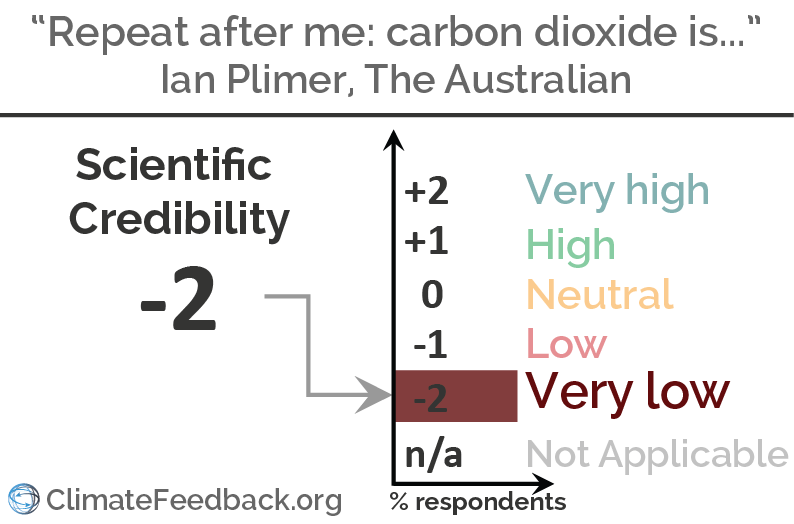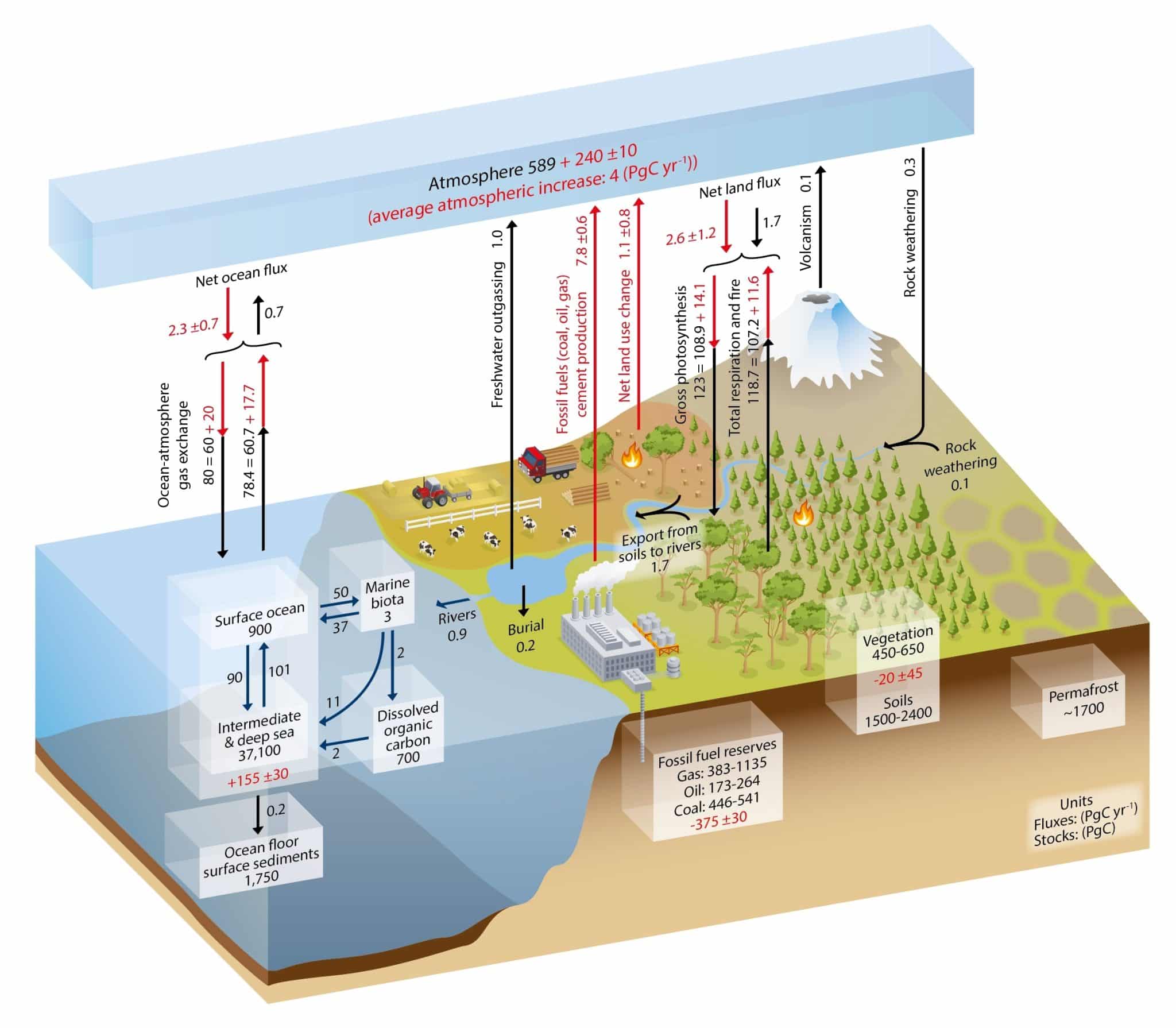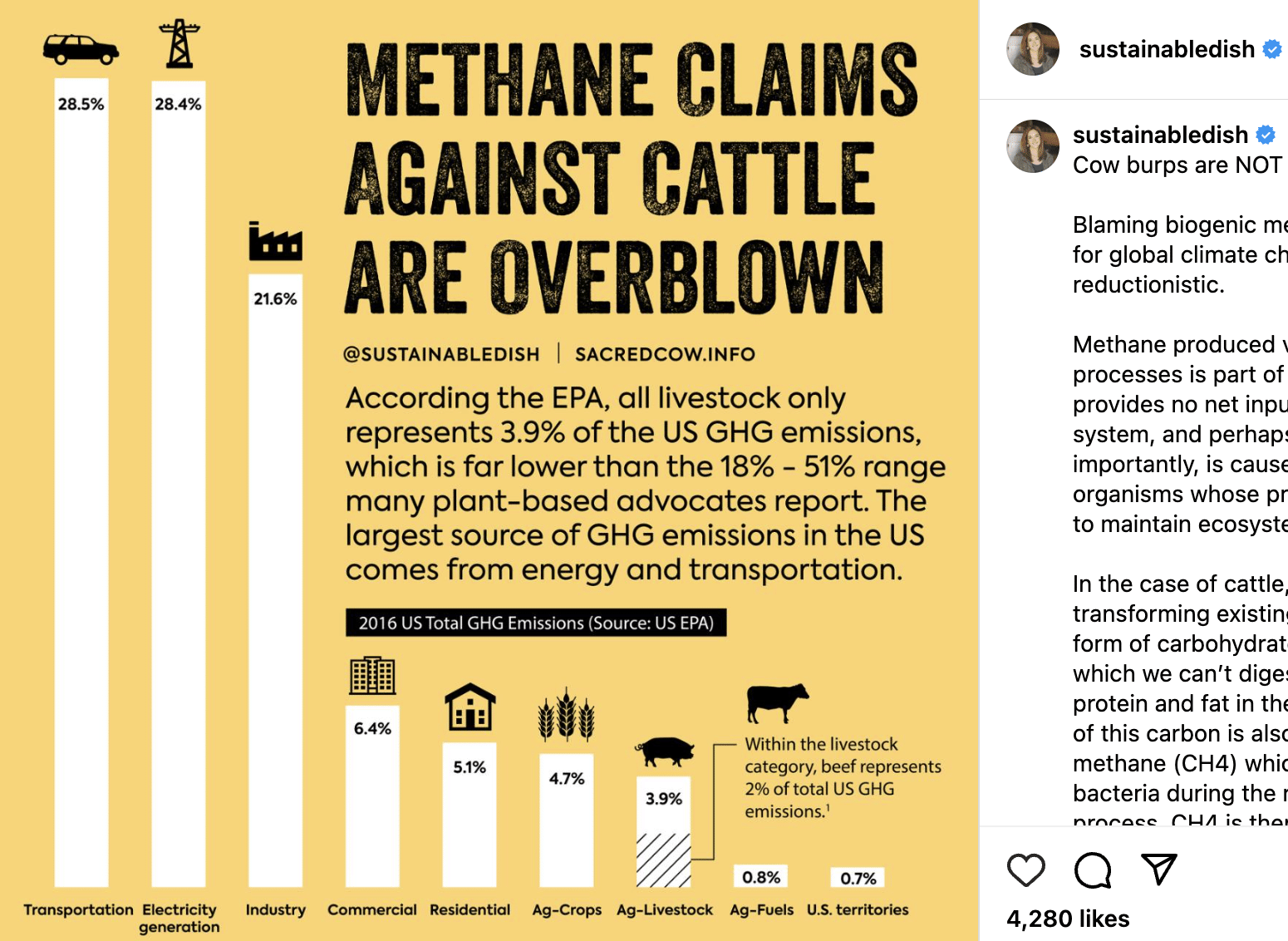- Climate
The Australian publishes "deeply ill-informed" opinion on climate by Ian Plimer
Reviewed content

Headline: "Repeat after me: carbon dioxide is good for us"
Published in The Australian, by Ian Plimer, on 2018-08-07.

Scientists’ Feedback
SUMMARY
This op-ed published by The Australian, written by Ian Plimer, makes a large number of claims that run counter to science and observations or are the expression of fallacious reasoning. The title of the op-ed—”Repeat after me: carbon dioxide is good for us”—reflects how it rejects evidence of harmful consequences of human-caused climate change and only cherry-picks a few possible benefits.
Scientists who reviewed the story found that it distorted or ignored published research on many topics. Plimer also does not support his extraordinary claims with evidence or research.
See all the scientists’ annotations in context. You can also install the Hypothesis browser extension to read the scientists’ annotations in context.
REVIEWERS’ OVERALL FEEDBACK
These comments are the overall assessment of scientists on the article, they are substantiated by their knowledge in the field and by the content of the analysis in the annotations on the article.

Professor, Met Office Hadley Centre & University of Exeter
This deeply ill-informed article repeats several of well-worn but deeply misleading and mistaken assertions, which have been shown to be wrong many times.

Professor, University of New South Wales
This article is an impressive collation of the well known, scientifically wrong, and overused denier arguments. It is ideologically motivated and, frankly, utter nonsense.

Postdoctoral Research fellow, Harvard University
This article is appalling in its misrepresentation of climate science. A large majority of the statements made about the science of climate change are misleading or flat out wrong.
Human emissions have increased the carbon dioxide concentration on Earth by over 40%, but Plimer’s article gives the impression that the human contribution is negligible.
There are mountains of evidence that carbon dioxide has played a major role in influencing Earth’s climate now and in the distant past, but Plimer rejects this with no justification.

Postdoctoral research fellow, Potsdam Institute for Climate Impact Research
This article is an amalgamation of logical fallacies, misleading talking points, and downright factually incorrect statements regarding the physics of the climate system. Every talking point in this article has been debunked many times over and it is astonishing that this was published.
The article contains several inaccuracies and false statements. Furthermore, flawed reasoning is used, such as the “short atmospheric residence time” argument.

Research Scientist, University of Colorado, Boulder
The article includes many outright lies as well as unrelated points made to feel as though they are connected to climate. I am actually surprised that any news outlet would publish an opinion piece with so many falsehoods, easily debunked by even cursory reference to decades of published work from scientists and scientific organizations around the globe. An appalling piece of rhetoric.

Research Associate, Colorado State University/NASA JPL
This article claims things that aren’t true. For example, 1980s papers calculate the importance of clouds, climate models projected many changes we’ve now seen and almost all of the increase in atmospheric carbon dioxide is due to human emissions. Temperatures correlate strongly with cumulative human emissions and since 1980 the correlation with solar activity is almost zero. There are false statements about all these and more. A 1990s judgment applies to this article: “everyone in this room is now dumber for having listened to it”.
(This rating is a personal opinion and does not reflect the views of any of my employers or affiliations.)
Notes:
[1] See the rating guidelines used for article evaluations.
[2] Each evaluation is independent. Scientists’ comments are all published at the same time.
Annotations
The statements quoted below are from the article; comments are from the reviewers (and are lightly edited for clarity).
by Ian Plimer

Postdoctoral research fellow, Potsdam Institute for Climate Impact Research
Ian Plimer is not a climate scientist (he is a geologist by training) and has a long and well established history with the mining and fossil fuel industry. This should have been clearly disclosed at the end of the article due to the obvious conflict of interest.
More than 100 climate models over the past 30 years did not predict what actually happened because it was assumed carbon dioxide had the pivotal role in driving climate change and that the effects of clouds, back-radiation and the sun were trivial.

Research Associate, Colorado State University/NASA JPL
Climate model projections from decades ago accurately predicted: (1) global warming would happen, (2) it would happen faster at high latitudes, (3) the Hadley Cell circulation would expand poleward, (4) the stratosphere would cool, (5) Arctic sea ice would retreat, (6) convective cloud tops in the tropics would get higher.
These changes have all now been measured. For example, a 1988 study1 discussed rising convective cloud tops. And a 2016 study2 showed it was measured with satellites.
- 1-Wetherald and Manabe (1988) Cloud Feedback Processes in a General Circulation Model, Journal of the Atmospheric Sciences
- 2-Norris et al (2016) Evidence for climate change in the satellite cloud record, Nature
Rather than take Plimer’s word for this, a quick google of climate model predictions (and some evaluation of the quality of sources) will lead you to actual comparison of early climate model projections versus observations. Plimer’s statement is simply not true, climate model projections have been surprisingly accurate despite the simplicity of early computer models. As for the relative contribution of various factors to this warming, carbon dioxide and other greenhouse gases are indeed much more important than other factors like clouds and the sun. See excellent visuals of this here.
it was assumed carbon dioxide had the pivotal role in driving climate change and that the effects of clouds, back-radiation and the sun were trivial.

Research Associate, Colorado State University/NASA JPL
It was not assumed carbon dioxide had a pivotal role, this is calculated using equations based on physics.
The effect of clouds… was not assumed, but is a result of equations you get from physics. Here is a 1989 study* that talks about how important clouds are. “Back radiation” is included in all climate models and comes from carbon dioxide, among other gases. The Sun’s activity is included in climate models, although it has been generally cooling if anything over the last 40+ years.
- Cess et al (1989) Interpretation of Cloud-Climate Feedback as Produced by 14 Atmospheric General Circulation Models, Science
Climate projections also assume that planet Earth is not dynamic

Research Associate, Colorado State University/NASA JPL
This is nonsense. The models assume that physics works and just implement equations in a way that computers can munch through them.
This makes them imperfect, but this statement shows complete cluelessness about models or physics.
Climate projections also assume […] that a temporary terrestrial vertebrate on an evolving planet can change major planetary and extraterrestrial systems.

Postdoctoral research fellow, Potsdam Institute for Climate Impact Research
This is the “argument from incredulity” logical fallacy. Ian Plimer is so bemused by the physics of climate change science, he refuses to accept its conclusions.
Unless the past is understood, climate projections can be only highly speculative.
The past is quite well understood. Ice cores record the tight correlation between CO2 and temperatures over the past 800,000 years. And climates that experienced CO2 concentrations comparable to today’s for thousand of years were very warm, much warmer than today, because the climate system had time to adapt to these high greenhouse concentrations*.
- Fischer et al (2018) Palaeoclimate constraints on the impact of 2 °C anthropogenic warming and beyond, Nature Geoscience
It is lucky then that we have so many paleoclimate archives that do place our current climate changes in context with the past! Let’s take a look at what the Antarctic ice core record tells us. From this archive we can directly measure CO2 concentrations and use water stable-isotopes as a proxy for temperature. Australian Antarctic scientist Tas van Ommen shows that CO2 and temperature are clearly linked over the past 800,000 years (see figure below). If you prefer NASA as your arbiter of evidence/fact, go for their presentation of ice core data.
there is no relationship between temperature and carbon dioxide emissions by humans

Professor, Met Office Hadley Centre & University of Exeter
Actually there is a relationship if you look on the appropriate timescales.

Research Associate, Colorado State University/NASA JPL
It’s expected that cumulative human emissions and temperature will correlate*.
They do. Since 1970 the correlation is extremely strong: almost 90% of all temperature change correlates with human emissions. About 0.2% correlates with solar activity, and even that is nonsense because temperatures went up while we measured the Sun getting cooler.
- Zickfeld et al (2016) On the proportionality between global temperature change and cumulative CO2 emissions during periods of net negative CO2 emissions, Environmental Research Letters
water vapour has been the main greenhouse gas and carbon dioxide has had a minuscule effect on global climate
It is true that water vapour is a main greenhouse gas, but the amount of water vapour is also tightly related to temperatures (and should therefore be seen as an enhancing feedback, not a driver). That is, higher CO2 will increase temperatures, which will increase water vapour, which will increase temperatures… To write that “carbon dioxide has had a minuscule effect on global climate” is of course utter nonsense—see other comments.

Postdoctoral research fellow, Potsdam Institute for Climate Impact Research
This is a non-sequitur: “CO2 can’t have a large impact on climate because water vapour is Earth’s primary greenhouse gas”. The reality, of course, is that the amount of water vapour in the atmosphere is relatively stable and bound by atmospheric temperature. CO2, on the other hand, can be easily added to the atmosphere in large amounts, altering the Earth’s energy balance and climate in the process.
Carbon dioxide is a trace gas in the atmosphere.

Scientist, University of Bonn, Germany
This is the first officially true sentence due to its brevity. The rest of the paragraph shows it is intended to suggest something that is wrong.

Research Associate, Colorado State University/NASA JPL
This paragraph is also nonsense because carbon dioxide heating has been directly measured. Satellite data was reported in 20011. And surface data in 2015.
The extra heating we’ve caused through carbon dioxide2 is enough to charge more than 700,000 DeLorean’s flux capacitors every second. Or blowing up about 10 Trinity test nukes every second.
- 1-Harries et al (2001) Increases in greenhouse forcing inferred from the outgoing longwave radiation spectra of the Earth in 1970 and 1997, Nature
- 2-Feldman et al (2015) Observational determination of surface radiative forcing by CO2 from 2000 to 2010, Nature
We are expected to believe that emission of traces of a trace gas into the atmosphere is a major planetary driving force.

Postdoctoral research fellow, Potsdam Institute for Climate Impact Research
I assume then that Ian also denies the existence of the ozone hole due to emissions of trace gases such as CFCs and HFCs?
Do we really believe that one bellowing fan in a crowd of 85,000 at the MCG can completely change the course of a game?

Research Associate, Colorado State University/NASA JPL
The argument here is that something small doesn’t matter. Following its logic, then it must be safe to eat around 28 g (1 Oz) of hydrogen cyanide. Even though research has found that this is enough to kill dozens of people, the article’s logic says that there is no way something small can cause harm so eating hydrogen cyanide is fine.

Scientist, University of Bonn, Germany
Do we really believe that one player in a stadium with an audience of 85,000 can make a difference?
Naturally also small concentration can matter. Many substances are, for example, poisonous at much smaller concentrations.
What matters is the amount of CO2. That there are also inert molecules in the atmosphere does not change the radiative influence of CO2.
It is pretty amazing that Plimer states in this same article that “Over the past 30 years, planet Earth has greened due to a slight increase in atmospheric carbon dioxide.” Suddenly it is no problem that CO2 is a trace gas.
For the past 4567 million years, the sun and the Earth’s orbit have driven climate change cycles.

Postdoctoral research fellow, Potsdam Institute for Climate Impact Research
Another logical fallacy. Just because orbital cycles controlled multi-millennial climate change in the past, that does not mean that anthropogenic emissions of greenhouse gases are not capable of altering the climate.
In the past, the atmospheric carbon dioxide content has been orders of magnitude higher than now, yet there were ice ages
This is a very bold (and wrong) statement. In the past 2 million years, CO2 has been lower than today and there were ice ages (glacials) when CO2 fell below a certain threshold. If we look further back, e.g. tens of millions of years, to periods of time when CO2 was higher than today (as in the Eocene), there was not much ice or snow around (if any)—certainly no ice age. If we go hundreds of millions of years back, the Sun was less strong than today. So yes, there might have been ice with higher CO2 concentrations and a faint Sun, but who knows? CO2 reconstructions do not go that far back.
The current interglacial reached a peak about 5000 years ago.
This statement is misleading. Scientists do find evidence for warmer summers during a period roughly 5,000 years ago. However, these were also accompanied by colder winters in many places, and some places did not have warmer summers. The changes in climate at that time were the result of natural changes in Earth’s orbit. However, Earth’s orbit is not the cause of the warming over the last ~100 years.
Since then, the planet has been cooling on a millennial scale
Here the author is muddling the issue of climate change by introducing time periods that are unrelated. Human-caused climate change via significant greenhouse gas emissions as discussed today only refers to the last roughly 100 years. This human activity has completely altered the Earth’s climate from any natural trend that may occur over 1,000s of years. The “millenial” scale is not relevant to the discussion of current human-caused climate change.
Just 1.25 per cent of the carbon dioxide in the atmosphere-ocean system has been released by humans in the past 250 years.

Research Associate, Colorado State University/NASA JPL
About 100% of the increase in atmospheric carbon dioxide is due to humans. This is easy to show since 1980 using publicly available measurements. Nature emits and absorbs lots, but the net natural contribution over decades is close to zero*.
- Richardson (2013) Comment on “The phase relation between atmospheric carbon dioxide and global temperature” by Humlum, Stordahl and Solheim, Global and Planetary Change
The atmospheric residency time of carbon dioxide is five years and it is quickly sequestered into plants, marine life, oceans and sediments.
There are many papers that looked at the time it would take for natural negative feedbacks to remove the excess carbon from the atmosphere. It would take millennia*.
- Eby et al (2008) Lifetime of Anthropogenic Climate Change: Millennial Time Scales of Potential CO2 and Surface Temperature Perturbations, Journal of Climate
This statement of the “short residence time” has been misused in the past. This statement ignores the fact that there is a dynamic exchange between the atmosphere and the ocean. See e.g. Figure 6-01 in the IPCC 2013 report (copied below)—while the ocean indeed takes up about 80 billion metric tonnes of Carbon per year from the atmosphere, it also releases about 78 billion metric tonnes of Carbon per year back, hence CO2 molecules are not immediately sequestered as suggested by the author, but are subject to a dynamical exchange leaving the annual net sequestration to be on the order of 2 billion metric tonnes of Carbon per year, or only roughly 20-25 % of the annual human-caused CO2 emissions. This number is supported by models and measurements of the partial pressure of carbon dioxide in the ocean.
Figure – Simplified schematic of the global carbon cycle. Source
If human emissions of carbon dioxide drive global warming, why have there been slight warmings and coolings since the Industrial Revolution?

Postdoctoral research fellow, Potsdam Institute for Climate Impact Research
Because the Earth’s climate is not static and contains internal variability on time-scales from years to multiple decades. Volcanic eruptions can also alter the climate by injecting aerosols into the atmosphere which have a cooling effect.
Because there are other drivers of change too, such as aerosol particles that have an overall cooling effect. There is also internal climate variability. Nevertheless, the long-term warming is attributable to increasing greenhouse gas concentrations.
Why is it that human emissions of carbon dioxide drive global warming yet natural emissions do not?

Professor, Met Office Hadley Centre & University of Exeter
Nobody claims this, it is a strawman argument.
Carbon dioxide is plant food.

Postdoctoral research fellow, Potsdam Institute for Climate Impact Research
Another non-sequitur. This is totally irrelevant to its role as a potent greenhouse gas.
Without carbon dioxide, there would be no complex life on earth. It is neither pollution nor a poison, and in the past the atmospheric carbon dioxide content has varied enormously.
This sentence is correct. But increasing CO2 above natural levels has an undeniable impact on climate.
Biological, geological and planetary systems are extremely robust. Our evolving dynamic planet has survived sea level changes of hundreds of metres

Postdoctoral research fellow, Potsdam Institute for Climate Impact Research
This is a non-sequitur. Just because the physical Earth system still functions after major climatic changes, doesn’t mean that we as humans should not be concerned about its impacts on our civilization.
Our evolving dynamic planet has survived sea level changes of hundreds of metres

Scientist, University of Bonn, Germany
That is really nice for that rock revolving around the Sun. I personally also care about the people and communities living in coastal cities and towns and their cultural heritage. Ian Plimer can naturally have another opinion on their value.

Professor, Met Office Hadley Centre & University of Exeter
The planet has survived these changes, but back then there were no humans around. Now we have many coastal cities, and populations of tens or even hundred of millions live within reach of sea level rises that have happened in previous warmer periods in Earth’s history.
Our evolving dynamic planet has survived[…] mass extinctions
The planet has survived mass extinctions, but many species (per definition) have not. It was never a question whether the planet itself will survive climate change. (It will!).
Now the states rely on the weather and compete to reach the bottom. South Australia is winning: it has the most unreliable grid in the world outside Africa and the most expensive electricity. When South Australians buy electricity at $14,200/MWh, they are paying the equivalent of $400 a litre for petrol.
Mark Diesendorf, Associate Professor, UNSW Sydney
The comments about South Australia are misleading. SA has the same reliability as the rest of the Australian National Electricity Market.
On average, SA has always had the highest electricity prices of the Australian states, long before wind power made a significant contribution, because of SA’s high dependence on high-priced natural gas. The growth of wind power has actually reduced the wholesale price of electricity in SA compared with what it would have been in the absence of wind. This is a consequence of the Merit Order Effect: wind and solar can bid into the grid at zero, or close to zero, price, because they have no fuel cost.
The figure $14,200/MWh is grossly misleading. It’s the price during a rare peak in demand when supply was low. Similar high peak prices have occurred occasionally in the other states. It’s not typical of SA.
Never mind that the emissions of carbon dioxide to make and maintain a wind or solar industrial complex are far greater than they will ever save.

Postdoctoral research fellow, Potsdam Institute for Climate Impact Research
This is completely incorrect.
Australian emissions, comprising 1.3 per cent of global annual emissions, is dwarfed by annual increases of 2 per cent globally and 4 per cent by China.

Postdoctoral research fellow, Potsdam Institute for Climate Impact Research
Another misleading statement. All nations contributing less than 2% of emissions are, cumulatively, more important than India or China. It absolutely does matter that these nations reduce their emissions.




